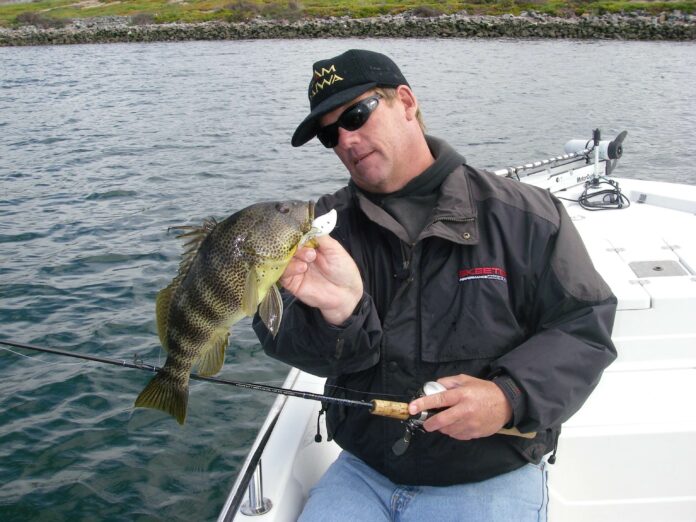By Captain Bill Schaefer
Special to Western Outdoor News
One question I’m asked many times at seminars is, what is my favorite way to catch spotted bay bass? Well, that would be with crankbaits. When a bass hits a crankbait you get a hard rattling feeling all the way to the handle of your rod. The skills you develop from learning to work crankbaits around weeds, dock, and rocks could keep you in tune for freshwater bass fishing as well if you chase the green bass. This technique can be fun and exhilarating.
There are so many different types of crankbaits as well as hard jerkbaits (yes, they are technically crankbaits), to choose from you can work from the shallowest water to the deep. As you get better, you can eliminate some of the in-between size of divers and use a deep diver to cover more depths. You can actually learn to walk the lure from shallow to deep by counting down your retrieves and increasing them as you get deeper.
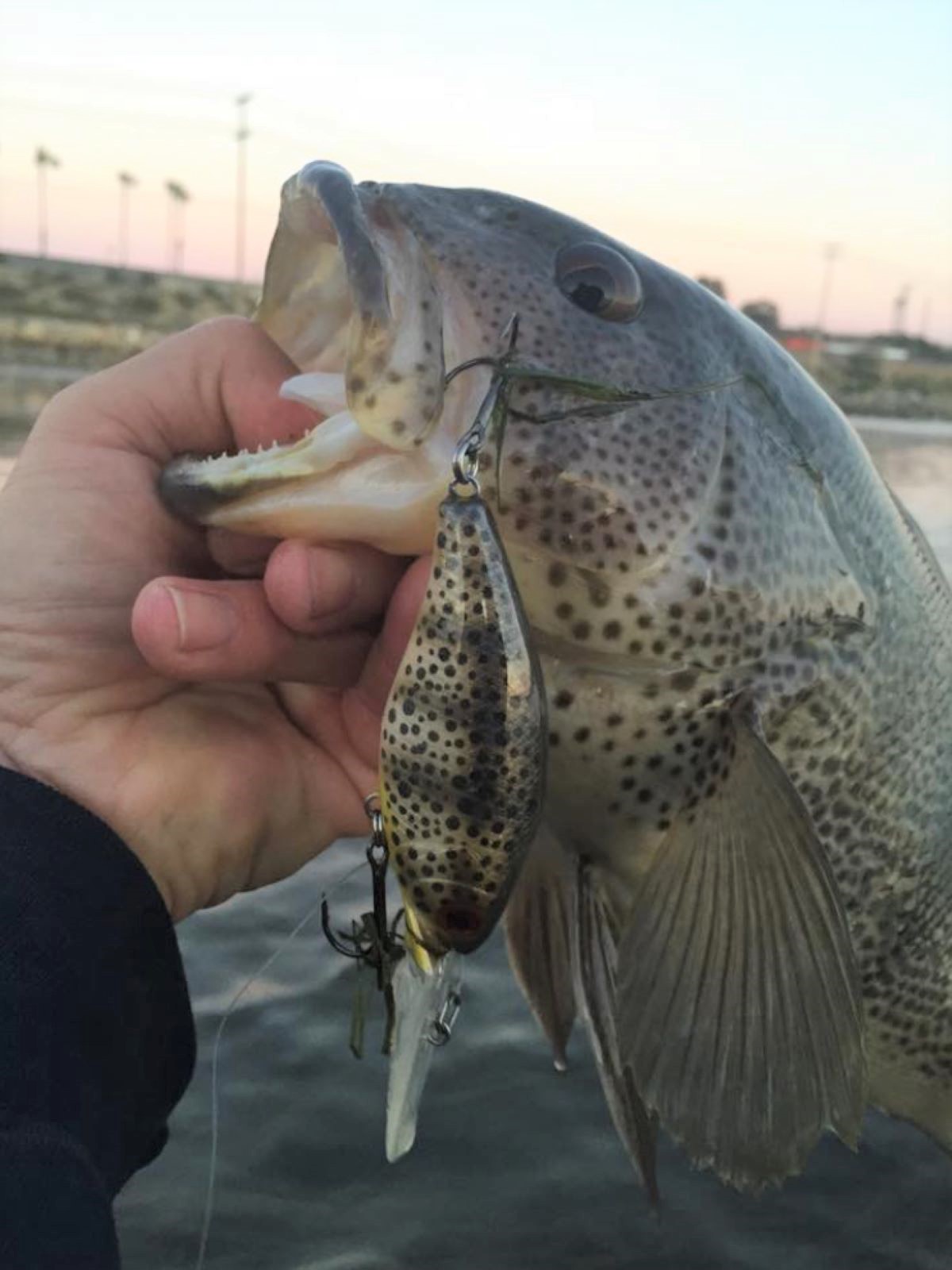
One thing to remember is to pay attention to the tidal movement. Is it high; is it low; is it going from high to low or low to high. You need to pay attention to how much water you have to play with over the shallow or even deeper eel grass. That is, how deep is the water column from the surface to the tips of the eel grass is. As long as the tide is moving you should do well as long as you can work the lure over the eel grass.
Let’s start with that example. If you have a super high tide, many times the bass are right up in the shallows. You can go to a shallow running crank or use a deeper diver, but walk it out as I said. I tend to use floating crankbaits most of the time. When you pause your retrieve, the erratic motion of it floating up, often triggers a strike you will definitely feel. So, if the bait floats up every time you pause, you can throw that crank up into the shallowest of water and work it back by reducing your retrieves between pauses. As you venture out further, you increase the cranks between the pause.
Now, if you find that the bass are consistently biting in shallow water weeds or on rocks you can go down the shore parallel and throw a shallow diving model bait that, say, only dives 3 to 5 feet deep. Remember, that even though your meter says it is 5 feet deep, there could be weeds coming up a foot or two off the bottom, narrowing the column or open water you have to throw your bait in. Hard jerkbaits also do well in this scenario. This might be one of the only times when I might use a neutral buoyancy jerkbait.
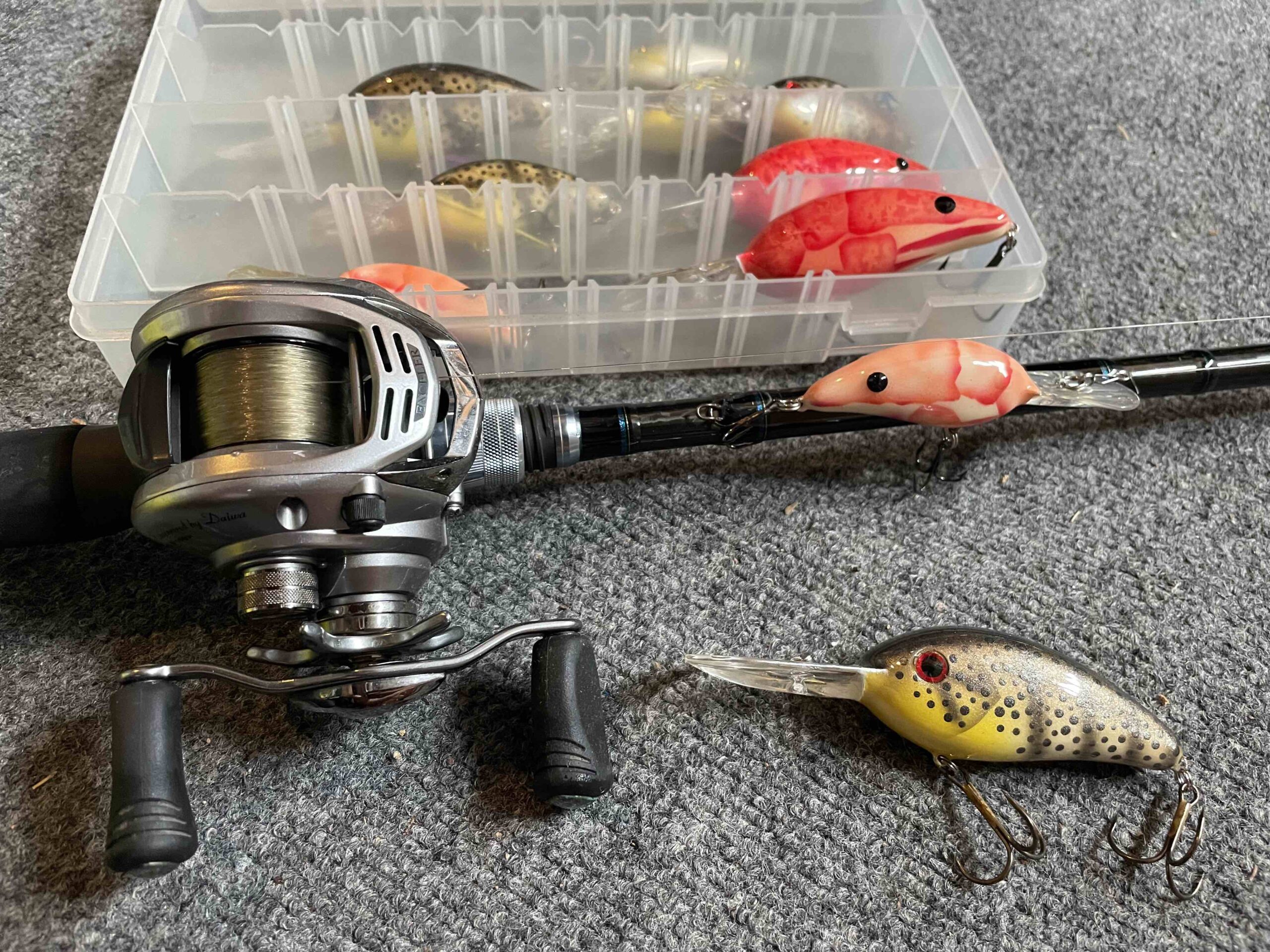
Now, as you get into deeper water and the weeds disappear and a sandier bottom is apparent, I like to walk the crankbait along the bottom, using the bill to dredge up sand with the tip of the bill occasionally. Crank the bait down until you make contact and then go to a slow retrieve mixed with pauses. This commotion will attract the bass. They may take this for a wounded baitfish or a crab scurrying across the bottom. You may pick up a few weeds, but sometimes this can be worth a bigger bass.
You can throw crankbaits from the shore as well, but it can be difficult. Usually a neutral buoyancy jerkbait works better. You can work it in a straighter line a little better than a shallow diving crankbait, which would be my second choice in this situation. Working this bait from shore would be better if the tide is a real high tide with almost no weeds under water. Don’t worry the bass are there, feeding on anchovy and smelt.
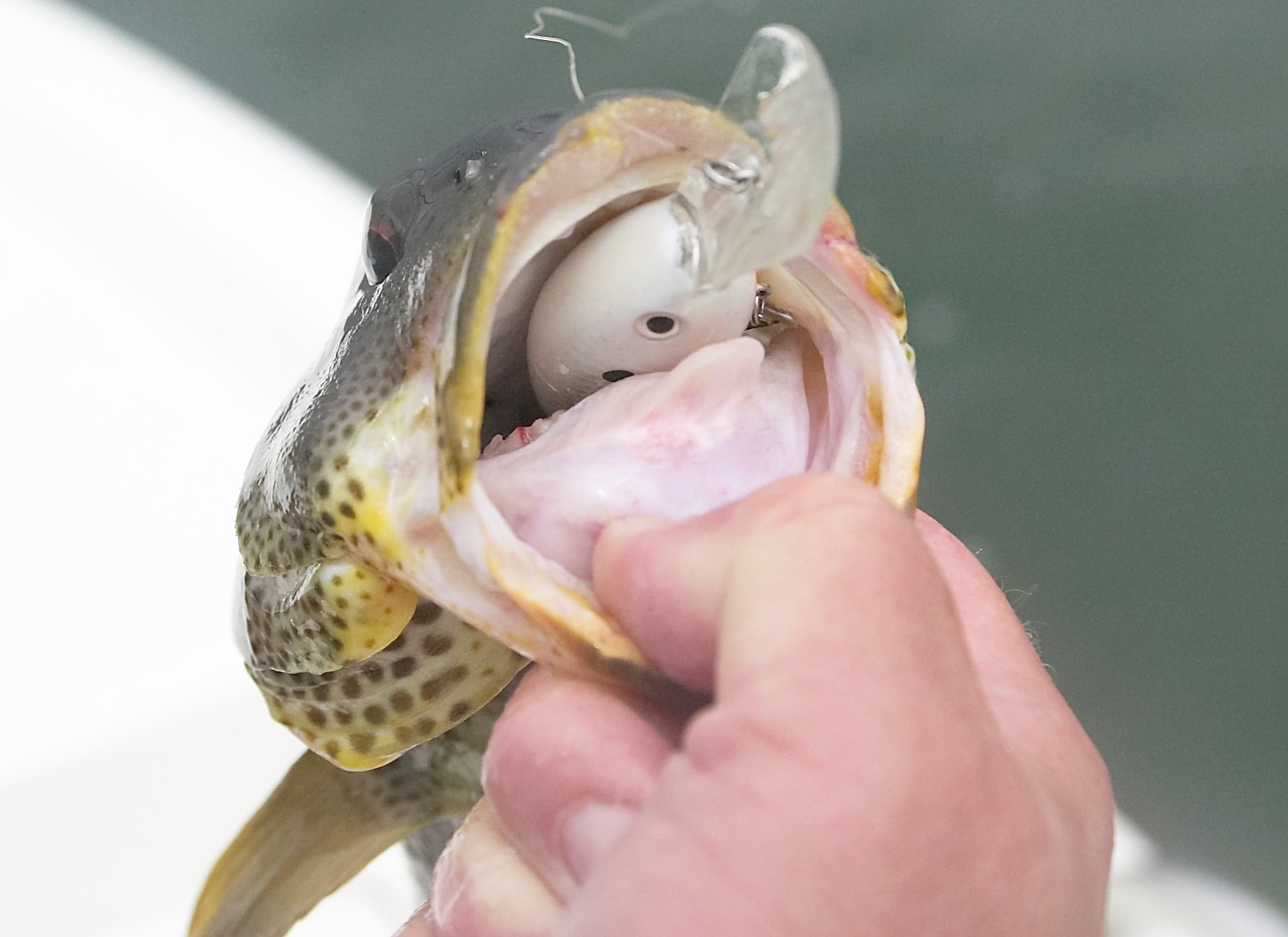
As we all know, the spotties will also hang out on docks and pilings. As you get better with casting crankbaits around pilings you can swim your crank right out along the pilings and score some giant bass. Empty boat slips can also produce well. I caution you to avoid bouncing your bait off the side of a boat. You don’t want the owner out yelling at you. But bouncing your crankbait off the piling on the retrieve may produce that big bite.
For tackle I use a 7 to 8 foot Daiwa medium action rod with 10 to 12 pound Maxima monofilament. The mono lets me cast it further and it seems to give me better control over the bait as far as how deep it runs. Colors can vary with your favorites. I use Bomber Fat Free Shads in a firetiger and plain white more than any other. I also use a chrome/black back Devils Horse jerkbait model to emulate an anchovy, it looks just like one. There are even guys painting lures up to look like ghost shrimp or even baby spotties and they do work.
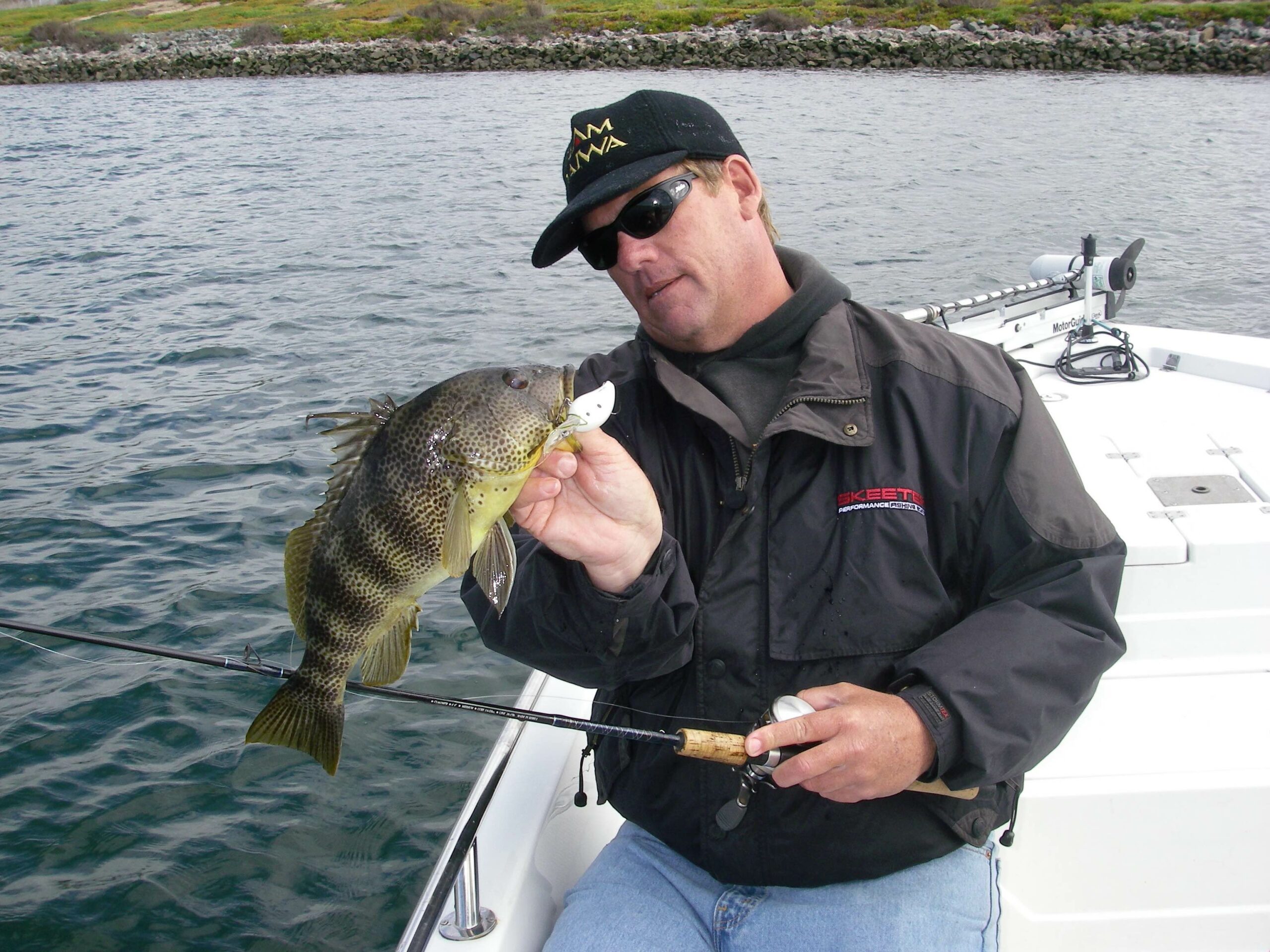
Don’t worry your regular spotty tackle rods and reels will do if you don’t own a large assortment of rods and reels. Mono or braid, the diameter of your line will play a factor in how deep a lure dives. I tend to use mono 99% of the time. It takes more skill to learn the cadence of your retrieve then the casting of the bait. That will only play into the scenario when you get around the docks and rocks, as I mentioned.
You can buy an assortment of cranks to get you through all depths, but you can practice your way to using only one or two to cover those same depths. Don’t lose faith; you will get better the more you throw crankbaits for spotted bay bass and acquire the skills to use them in more scenarios.
Whether you’re fishing out of a kayak, float tube, or boat, you should have an assortment of various color and different depth diving crankbaits. You will find it hard to put the crankbait rod down once you try it for a while. Good luck out there.
This story appears in the February 17, 2023 print edition of Western Outdoor News. To get early access to every info and feature-packed issue of the West Coast’s biggest and best outdoor sporting newspaper, click here.

